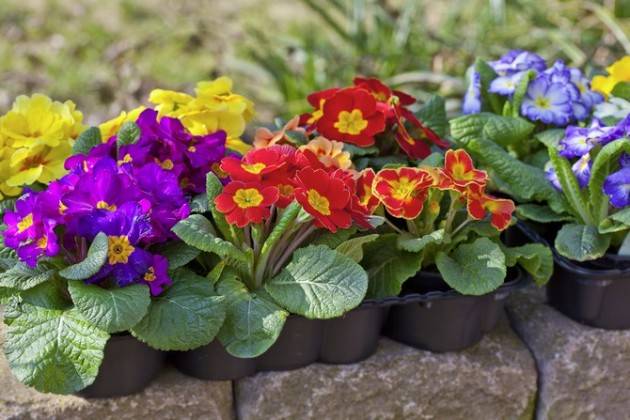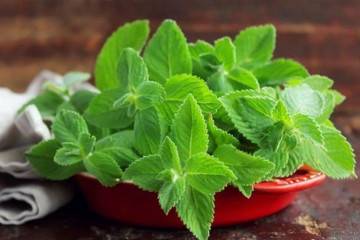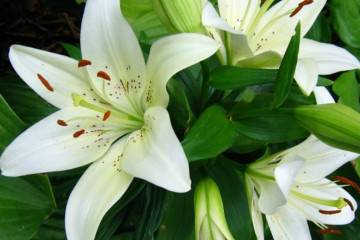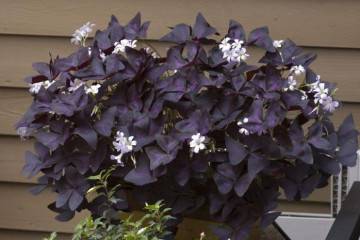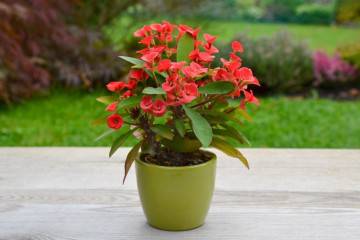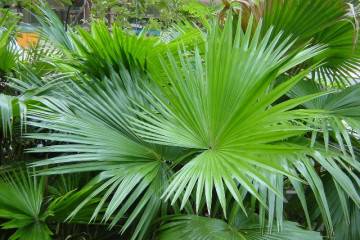Indoor primrose - how to care at home
Content:
Indoor primrose is appreciated among flower growers for its compact size and decorative appearance. The plant is easy enough to grow, since the measures for its care are easy and do not require special skills. In addition, the plant has medicinal properties.
Indoor primrose - what is this flower
Primula is an ornamental plant belonging to the Primroses family. The flower received its second name in honor of the family to which it belongs - "Primrose". The plant can be annual, perennial species are also found. There are more than 500 species of primrose, most of them are grown at home, like indoor flowers.
The height of a primrose grown at home is usually no higher than 30-40 centimeters. The flower is compact enough, which makes it especially easy to care for. The foliage surface is slightly pubescent, each leaf plate is on average 10 centimeters long. The shape of the sheets is round with wavy edges. They are located on elongated petioles. All leaf plates of the bush are collected at the base into a root rosette.
Primrose grows in its natural environment as a herbaceous plant. You can find wild flowers in South America, at the foot of the Andes mountains, in the northern part of the American continent and in Asia, most often in China.
Growing room primrose in a pot at home
Growing a primrose in a pot at home is very easy. Even novice growers can cope with its cultivation, if they adhere to special rules. Before buying, it is imperative to study the information on how to care for primrose at home, so as not to provoke the appearance of diseases.
The nuances of flower care immediately after purchase
How to care for primrose immediately after purchase, so as not to cause harm in the very early stages of growing a flower at home? First of all, you need to find the most favorable place.
Primrose, after planting in the ground, very quickly takes root and grows at the root. Immediately after the purchase, you need to pay attention to the temperature of the content of the bush, it should not be lower than 15 and above 20 degrees. Watering should be increased gradually, you should not immediately fill the plant.
Illumination and temperature conditions
Direct sunlight can burn the delicate leaf plates of primrose, so on hot days it is worth shading the flower or removing it deep into the room.
However, it is worth remembering that without the required lighting, the plant will not bloom on time and its foliage will fade. In the active period of the primrose, it is recommended to grow it on the western windowsills of the apartment.
The temperature of the content of the flower during flowering should be within 18 degrees.
Watering rules and humidity
Caring for room primrose at home also implies proper and regular watering.The flower needs to be watered often, but it should not be flooded.
After each watering, it is recommended to carefully loosen the soil in the pot so that the water does not stagnate. Primrose is prone to the formation of gray root rot, therefore, high-quality watering is not necessary with cold, settled water.
Primrose is not picky about moisture indicators. The main thing is not to overdry and not overmoisten it too much. During dry summer periods, you can spray the bushes with a spray bottle to freshen them up.
Top dressing and soil quality
Before the buds appear, primrose does not need feeding. Then, in order for the flowering to be bright and abundant, the flower needs mineral fertilizers. It is necessary to feed the primrose twice a month.
The planting substrate should be slightly acidic. It is recommended to buy ready-made potting mix for ornamental flowering plants. For growing primrose, you can make a substrate at home - mix turf, humus and river sand. You can also add peat.
Flower container size
At the first transplant, the pot is chosen medium in size. In the next couple of years, every spring, the capacity is changed, carrying out the transplant procedure.
The volume of containers should also be increased gradually so that the roots of the plant can grow well. The difference between last year's and the current pot in diameter is that the new container should be 3 centimeters larger.
Pruning and replanting
Pruning is essential to stimulate beautiful flowering. During this procedure, the peduncles are cut off, immediately after the buds on them have faded. This is done so that the plant directs all its forces to the emergence and blooming of new flowers.
Transplanting is also directly related to the care of primrose. It is desirable to carry out it annually, at least in the first years of the plant's life.
Usually the procedure is done in the spring, but it is not harmful if it is carried out in the fall. To pull the bush out of the pot, turn the container over and gently pull the plant out.
It is important not to damage the roots, otherwise the flower will not take root in a new place. Be sure to inspect the root system for damage and remove rotten or dried out areas.
It is recommended to lay drainage material at the bottom of the new container, this will protect the bush from moisture stagnation and the appearance of fungal diseases. A substrate is poured onto the drainage layer and a bush is planted.
Features of flowering plants
Home primrose blooms very beautifully. Flowers are collected in umbrella-shaped inflorescences, some varieties have single flowers. The buds can be colored red, white, pink, lilac, purple.
You can buy primrose in different shades of inflorescences and plant them on the same windowsill or pot as a mix of flowers.
Flowering begins in early spring and continues until late summer. With the onset of late autumn, the flower begins to prepare for wintering. Usually the plant is in hibernation for at least 2 months.
Flower reproduction methods
The most convenient and widely used primrose propagation methods are considered to be the separation of the bush and sowing seeds.
Reproduction by dividing the bush
In the spring, you need to separate the stable and healthy side shoots from the mother bush. Place them in a box with substrate and cover with plastic wrap.
You need to wait for each shoot to take root, then transplant it into separate pots.
Seed propagation
Seeds are planted in mid-summer in a wide box. First, the soil is moistened and planted shallowly into the ground. The box is covered with foil and placed in a shaded room.The temperature should also be moderate, in the range of 14-18 degrees.
When shoots appear, they can be transplanted in separate containers.
Growing problems, diseases and pests
If waterlogged, primrose can get sick with root rot. Its first signs will be yellowing of the leaves and the beginning of decay of the root collar. Soon the plant will rot at the root and die.
Of the pests, the spider mite can deliver problems, which covers the leaves and shoots with a thin cobweb. Soon the green part of the bush begins to turn brown and dry. The insects themselves are located on the back of the sheets.
How to deal with them
Affected leaves and shoots are removed. If the plant is neglected due to rot, you will have to get rid of it completely.
For pests, insecticides are used, preparations with which the bushes are treated. You can wash the leaves with soapy water under warm water.
An abundantly flowering primrose, the care of which will not cause much trouble, will ideally fit into any indoor flower arrangement or a summer garden. The plant has a different color of inflorescences and a beautiful shape of leaf plates. In addition to its decorative appearance, it also has healing properties.
